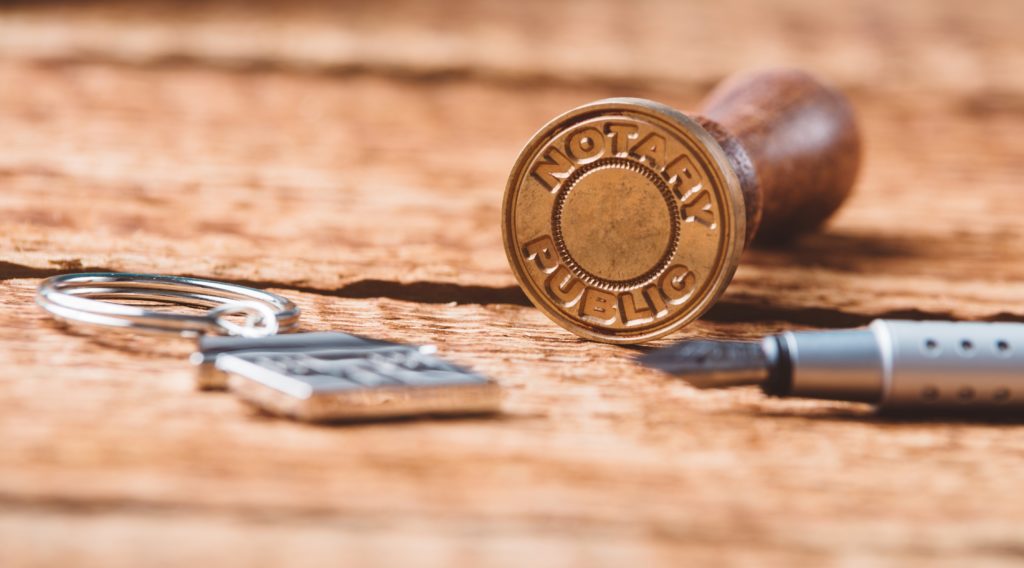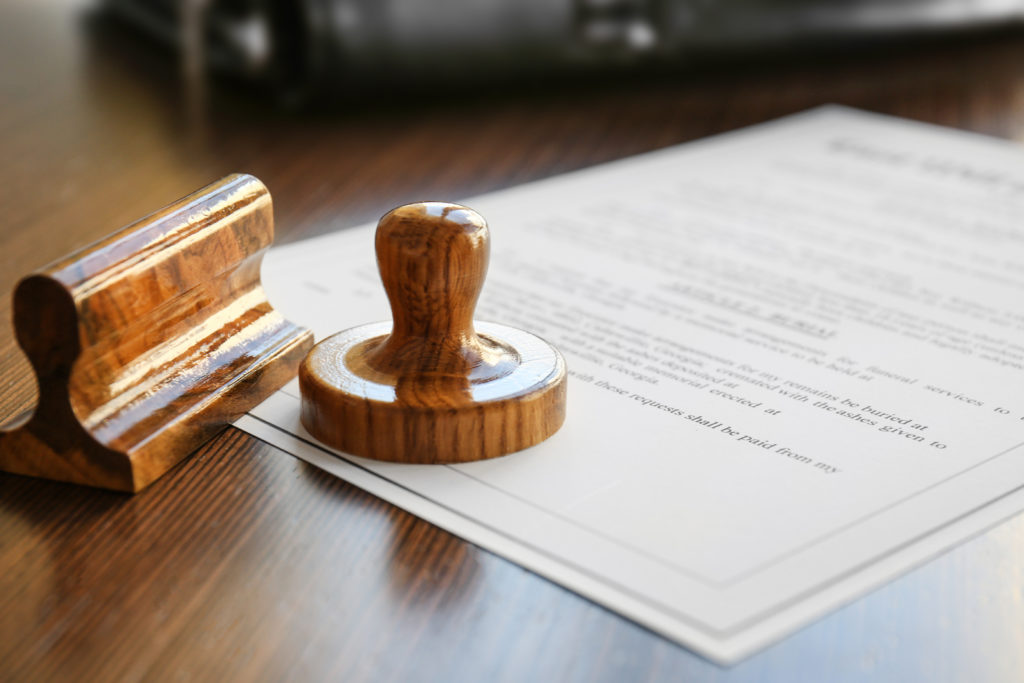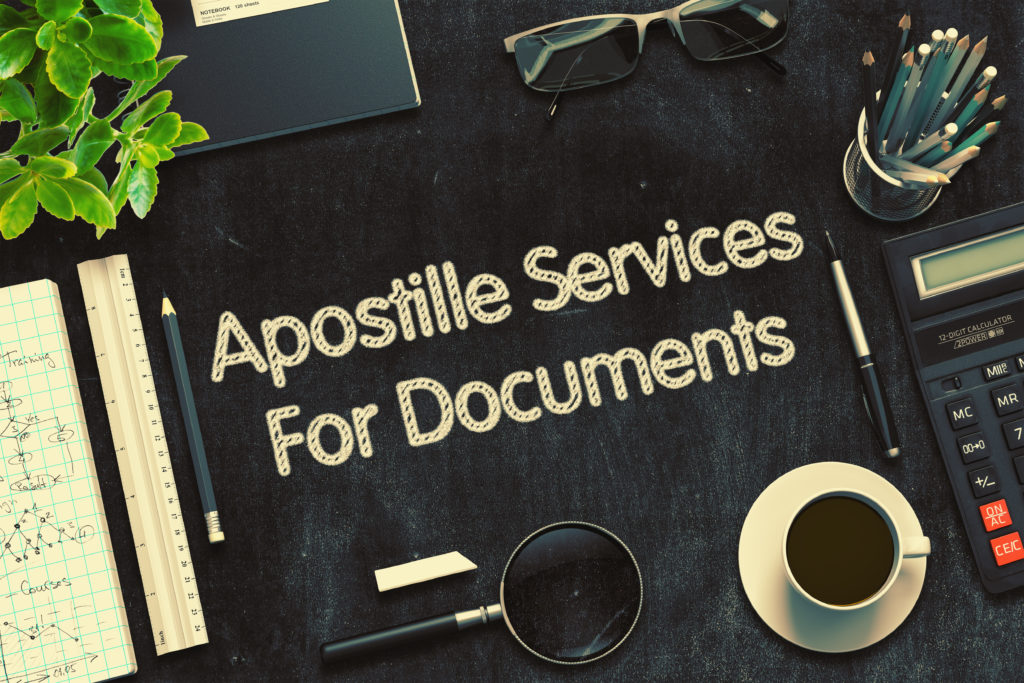Notarization is an important part of many legal documents and requires a notary seal or stamp to be affixed. But what exactly is a notary stamp, how do you obtain one, and what are the requirements for using it? Understanding these elements of notarization can help ensure your document meets all necessary criteria when seeking out this service. In this blog post we’ll cover everything you need to know about obtaining, storing and using a notary seal or stamp – from understanding the common mistakes that should be avoided to following the right steps in order to guarantee success with your document’s authentication process. So if you’re looking for reliable information on how best use your notary stamp then read on as we provide essential insight into making sure your paperwork remains legally valid.
Table of Contents:
- What is a Notary Stamp?
- How to Obtain a Notary Stamp?
- What are the Legal Requirements for Using a Notary Stamp?
- How to Use and Store Your Notary Seal or Stamp?
- Common Mistakes to Avoid When Using Your Notary Seal or Stamp
- FAQs in Relation to Notary Stamp
- Conclusion
What is a Notary Stamp?
A notary stamp is an official seal or embossed impression that is used to authenticate documents and other legal papers. It serves as a signature of the notary public, who has been appointed by the state government to witness and attest to the signing of important documents. The stamp must be applied in accordance with state laws and regulations, which vary from one jurisdiction to another.
a. Definition of Notary Stamp:
A notary stamp is an official seal or embossed impression that is used by a notary public on documents they have witnessed being signed. This serves as proof that the document was properly executed according to applicable law and regulations, providing authenticity for those involved in transactions requiring such authentication.
b. Types of Notary Stamps:
There are two main types of notary stamps – electronic (or digital) stamps and traditional rubber stamps – both serve similar purposes but differ slightly in their use cases depending on what type of document needs authentication. Electronic stamps are typically used for online applications while traditional rubber stamps are more commonly seen on paper-based forms or contracts due to their ease-of-use when it comes time for physical application onto a document’s surface area.
A notary stamp is a vital tool for authenticating documents, and with Notary On Demand, you can easily obtain the necessary stamps to get your important documents notarized. Next, let’s explore how to go about obtaining a notary stamp.
How to Obtain a Notary Stamp?
Obtaining a notary stamp is an important step for anyone looking to get their documents legally notarized. It is essential that you understand the requirements and steps involved in obtaining a notary stamp, as well as the associated costs.
Requirements for Obtaining a Notary Stamp:
In order to obtain a notary stamp, you must first meet certain criteria. Depending on your state of residence, these requirements may vary slightly. Generally speaking, all applicants must be at least 18 years old and have valid government-issued identification such as a driver’s license or passport. Additionally, applicants must complete an application form with information about themselves and submit it along with any applicable fees to their local Secretary of State office or other authorized agency.
After successfully passing the exam and attending an orientation session, applicants will receive their official commission from either their local Secretary of State office or other authorized agency. This grants them access to purchase stamps/seals bearing the applicant’s name and title, such as “Notary Public“.
The cost associated with obtaining your own personalized Notarial Seal/Stamp varies by state but generally ranges between $25-$50 depending on what type of seal/stamp you choose (electronic vs physical). Additionally, some states may also charge additional fees such as filing fees which could increase total costs even further. Therefore, it is important to check out all available options before making any decisions regarding purchasing seals/stamps online or through retail outlets near you.
Are you in need of a notary stamp? Obtaining one is easy, but there are certain requirements and steps that must be followed.
Requirements for Obtaining a Notary Stamp:
In order to obtain a notary stamp, you must first become an officially commissioned notary public. This requires completing the necessary paperwork and passing the state-specific exam with at least 80% accuracy. You will also need to purchase surety bond insurance as well as any other required supplies such as seals or stamps. Once all these requirements have been met, you can then apply for your official commission from your state’s Secretary of State office.
Steps for Obtaining a Notary Stamp:
After becoming an officially commissioned notary public, you can then proceed with obtaining your official seal or stamp from an approved vendor in your state. Depending on where you live, this may require submitting additional paperwork along with payment for the seal or stamp itself before it is shipped out to you. Once received, make sure to keep it stored securely so that it cannot be misused by anyone else who might come across it accidentally or otherwise.
The cost of obtaining a notary stamp varies depending on what type of seal or stamp is purchased and which vendor is used; however, most vendors charge between $20-$50 per item plus shipping costs if applicable. Additionally, some states may require annual renewal fees in order to maintain active status as a commissioned notary public which could add up over time if those fees are charged annually regardless of usage frequency during that period.
With the right information and guidance, obtaining a notary stamp is an easy process. Now that you know how to get one, it’s important to understand what legal requirements are in place when using a notary stamp so that you can use it correctly and safely.
What are the Legal Requirements for Using a Notary Stamp?
Notary stamps are an important part of the notarization process, and it is essential to understand the legal requirements for using them. Every state has its own regulations regarding notary stamps, so it is important to be aware of these rules before you use a stamp. Additionally, there are federal regulations that must be followed when using a notary stamp.
State-Specific Regulations on Using a Notary Stamp: Each state has its own laws governing how and when a notary can use their official seal or stamp. Generally speaking, all states require that the seal or stamp contain certain information such as the name of the person who holds the commission, their expiration date (if applicable), and other identifying information like an address or phone number. Additionally, some states may also require that certain words appear on the seal or stamp such as “notarial act” or “official signature” in order for it to be valid. It is important to check with your state’s specific regulations prior to using your notary seal or stamp in order to ensure compliance with local laws.
It is important to be aware of the legal requirements for using a notary stamp, as failure to comply with these regulations can result in serious consequences. To ensure that you are properly using and storing your notary seal or stamp, it is essential to understand how to do so correctly – which we will discuss in the next heading.
How to Use and Store Your Notary Seal or Stamp?
Using a notary seal or stamp is an important part of the notarization process. Notaries are required to use their official seals or stamps when performing certain acts, such as authenticating documents and verifying signatures. It is important for all notaries to understand how to properly use and store their seals or stamps in order to remain compliant with state regulations.
Proper Use of Your Notary Seal or Stamp:
When using your notary seal or stamp, make sure that you are following all applicable laws and regulations in your state. The information contained on the seal should be accurate and up-to-date, including your name, commission expiration date, county where commissioned, signature line (if applicable), title (notary public) and jurisdiction (state). Additionally, it’s important that you only affix your seal/stamp after signing the document yourself; if someone else signs first then you must affix the seal afterwards.
In addition to proper usage of your notary seal/stamp while performing acts as a notary public, it is also important that you keep it secure at all times when it is not being used. Depending on what type of device is used for making impressions (seal press vs rubber stamp), there may be specific storage requirements set by law in some states – so check with local authorities before storing yours away. Generally speaking, most states require either locked storage containers specifically designed for this purpose or keeping them under lock and key when they are stored away from home/office premises. Furthermore, most states also have restrictions on who can access these devices – usually limited to just one person – which means that any unauthorized access could lead to disciplinary action against the responsible party(ies).
By following the guidelines and avoiding common mistakes, you can ensure that your notary seal or stamp is used correctly and stored securely. Now let’s look at some of the most common mistakes to avoid when using your notary seal or stamp.
Common Mistakes to Avoid When Using Your Notary Seal or Stamp
However, there are some common mistakes that can be made when using these seals and stamps that should be avoided in order to ensure accuracy and validity of the document.
Misuse of the Official Signature Block:
One mistake that is commonly made when using a notary seal or stamp is misusing the official signature block. This includes filling out any information other than what is required for a valid notarization, such as adding additional text or changing font size or style. It also includes leaving any blank spaces within the signature block which could lead to questions about its authenticity later on down the line. To avoid this mistake, make sure you only fill out what’s necessary and double check your work before submitting it for notarization.
Improper Placement of the Official Signature Block: Another common mistake people make when using their notary seal or stamp is improperly placing it on their document. The placement must be exact in order for it to be considered valid; if placed too low, too high, off-center, etc., then it won’t count as an authentic signature from a qualified Notary Public. Make sure you take extra care in positioning your seal/stamp correctly so that all requirements are met and your document will remain legally binding after being signed by a Notary Public.
In conclusion, there are several mistakes one can make while using their Notary Seal/Stamp but with careful attention they can easily be avoided. It is important to read through all instructions carefully before signing anything and always double check your work prior to submitting documents for notarization; this way you can rest assured knowing everything has been done properly according to legal standards.
FAQs in Relation to Notary Stamp
How do I get a notary stamp in NY?
Getting a notary stamp in New York is easy with Notary On Demand. Our team of experienced and certified notaries are available to provide virtual or in-person services, making it convenient for you to get your documents notarized quickly and securely. All you need to do is fill out an online form, select the type of service you require, and schedule an appointment with one of our professional notaries. We guarantee fast turnaround times so that you can have your documents stamped without any hassle or delay. With Notary On Demand, you can trust that your documents will be notarized accurately and securely.
Where does a notary place their stamp?
A notary’s stamp is placed on the document that needs to be notarized. This stamp serves as a proof of authentication and verification of the document, ensuring its validity. The stamp includes information such as the name of the Notary Public, their state or jurisdiction, and an expiration date for their commission. It also includes a unique serial number which can be used to verify its authenticity with the issuing authority. The placement of this stamp varies depending on where it is being notarized; however, it typically appears near the signature line or at the bottom corner of each page in order to ensure visibility.
How do I notarize without a stamp in NY?
Notarizing without a stamp in New York is possible through the use of an electronic notary system. This system allows for documents to be notarized electronically, with the same legal effect as if they were signed and stamped in person. To do this, you must have access to an approved electronic notary platform that has been certified by the Secretary of State. Once you have registered on the platform, you can upload your document and complete the process digitally with an e-signature and digital seal from a qualified Notary Public. The entire process is secure, fast, and reliable – making it easier than ever to get your important documents notarized quickly and safely.
Does California require notary stamp?
Yes, California does require notary stamps. All documents that need to be notarized in the state of California must have a stamp or seal from an authorized Notary Public. The stamp or seal must include the Notary’s name, commission number, and expiration date. It is important to ensure that the stamp or seal is properly affixed to each document before it can be considered legally valid. Additionally, all notaries are required to keep records of their activities for at least 10 years after they leave office.
Conclusion
It is essential that you understand the legal requirements and use your stamp or seal correctly in order to ensure that your documents are valid. By following these guidelines, you can be sure that your notary stamp will serve its purpose and help protect the integrity of your important documents. Remember, when it comes to using a notary stamp, accuracy is key.
Do you need a notary stamp quickly and conveniently? Notary on Demand is here to help! Our service provides quick, convenient access to certified notaries who can assist with any document that requires authentication. With our secure online platform, we make it easy for customers all over the world to get their documents notarized in minutes – no matter where they are located. Don’t wait – get your documents authenticated today with Notary on Demand!




